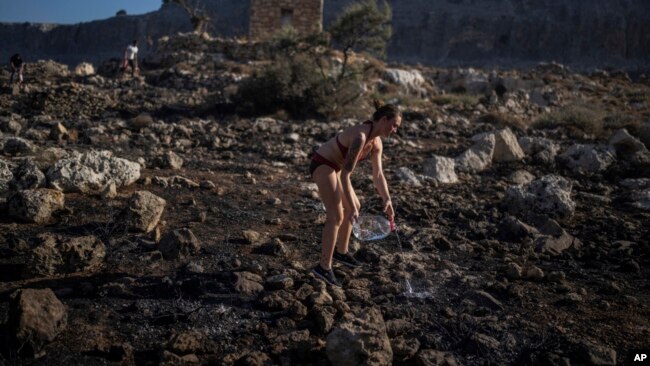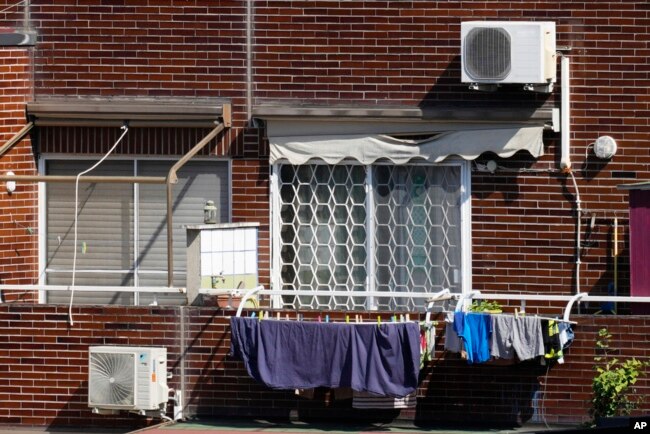Lessons from Gramsci for Today’s Social Movements

A mugshot of Antonio Gramsci from 1933. (Wikimedia).
He has been called one of the most original political thinkers of the 20th century. Historians point out that “If academic citations and internet references are any guide, he is more influential than Machiavelli.” And his impact on the way we think about the processes of social change has been described as “little short of electrifying.”
The accomplishments of Antonio Gramsci, born in Italy in 1891, are all the more remarkable considering that his life was both short and notably difficult: His family was destitute in his childhood; he was sick for much of his life; he spent the prime of his adulthood confined to prison by Benito Mussolini’s fascists after his own party’s attempts to foment revolution had failed; he was often denied access to books during his incarceration; and he died at the age of just 46. Yet, in spite of this, he produced a body of theory that has been widely admired and cited as an inspiration by organizers across several generations and multiple continents.
Amid all this acclaim, it is still fair to ask whether engaging with the Italian’s thinking remains worthwhile for activists more than eight decades after his death. Has interest in Gramsci become merely academic, or are there practical lessons that social movements can fruitfully draw today?
There’s a good argument that the latter is the case. For organizers working in the socialist lineage, Gramsci is important because he offers a version of Marxist analysis that sheds much of the dogmatism and backward-looking orthodoxy that has unfortunately clung to the tradition. At the same time, he retains core insights into why capitalism is inherently exploitative and why changing it will require movements from below to engage in a contest of power, rather than buying into the idea that the system can be successfully tinkered with by technocratic reformers with clever policy ideas.
But even for those who do not personally identify with the socialist tradition, understanding the thinking of Gramsci and his intellectual heirs allows for an appreciation of how movements internationally have developed their strategies: from landless workers in Brazil who have combined land occupations with the creation of a vibrant network of rural schools to left populists in Spain pursuing electoral strategies aimed at creating a new “common sense” in favor of redistribution and social solidarity. In the United States, awareness of Gramsci would be necessary to understand why left educators in New York might run a workshop on “conjunctural analysis,” or why a book like Jonathan Matthew Smucker’s organizing guide takes the title “Hegemony How-To.”
So what concepts, then, have movements taken from Gramsci’s body of theory? And how has it affected their approaches to organizing?
History won’t do our work for us
From Gramsci’s political thinking and practical strategizing come a set of ideas that arguably have only grown more salient with time. Among them: That revolutionary change will not inevitably come thanks to the preordained laws of history. That if progressive movements are to create change, they must win over large swaths of the public to their way of thinking about the world. And that organizing must take place on multiple fronts — cultural, political, economic — requiring engagement with many different institutions of society.
Although he died in 1937, Gramsci did not become well known outside of Italy, particularly in the English-speaking world, until the 1970s. That was when edited translations of his famous “Prison Notebooks,” written during his incarceration and surreptitiously smuggled beyond fascist reach finally became widely available. At his trial in 1928, Gramsci’s prosecutor had famously declared, “We must stop this brain working for 20 years!” The expansive “Prison Notebooks” show why the Mussolini regime saw the theorist as such a threat.
Although writing in fragmentary snippets, Gramsci dives deep into a vast array of topics — spanning religion, economics, history, geography, culture and education. This range, the historian Perry Anderson has argued, “had, and has, no equal in the theoretical literature of the left.” Beyond questions of political strategy, Gramsci’s work has a major impact on the academic fields of cultural studies, subaltern history, and the study of “world systems” under capitalism.
Owing to Gramsci’s wide range of interests, there are many different lessons that can be drawn from his work. But a first important lesson for organizers is one that emerged from the theorist’s rejection of elements of his own intellectual tradition.
A leader in the Communist Party of Italy, Gramsci witnessed a bold series of factory occupations in the Fiat auto plants in Turin in 1919 and 1920. These actions seemed like they might be a sign of a worker’s revolution that could follow on the heels of the historic Bolshevik victory in Russia. But then, after witnessing the rise of fascism and being jailed in 1926, he was forced to revise his vision of how a more just world might take shape. As the Jamaican-born British scholar Stuart Hall would later explain, Gramsci “worked, broadly, within the Marxist paradigm. However, he … extensively revised, renovated and sophisticated many aspects of that theoretical framework to make it more relevant to contemporary social relations.” One of the key aspects he jettisoned was the tradition’s sense of historical inevitability.
In Gramsci’s time, it was common for “scientific socialists” to expound a highly deterministic vision of history. According to this view, Karl Marx had uncovered trends in economic development that were akin to natural laws: capitalism was condemned by its own internal contradictions to produce crises, and these crises would inevitably lead to the victorious rise of the proletariat over its bourgeois exploiters.
Gramsci saw how these beliefs, propagated by elders and contemporaries alike, could lead to fatalism, passivity and extremist posturing. Those who thought that political problems would be solved by the inexorable march of history did not need to take responsibility for coming up with thoughtful plans that balanced visionary goals with pragmatic action. Instead they could, in Gramsci’s words, hold an “aversion on principle to compromise” and spread the belief that “the worse it gets, the better it will be.” As he put it, “Since favorable conditions are inevitably going to appear, and since these, in a rather mysterious way,” would propel forward revolution, these socialists saw initiatives aimed at proactively ushering in such change as “not only useless but even harmful.”
One can argue that such historical determinism came from a flawed and reductionistic reading of Marx. Yet there is no doubt that it became widespread among many radicals in different periods, and it was particularly dominant in the time of the Second International, the cross-border federation of labor and socialist parties that met periodically between 1889 and 1916, a period that coincided with Gramsci’s youth.
Gramsci was loyal to the idea that economic forces and class relations were critical in shaping the flow of history. Yet he believed that only through determined organizing and the strategic application of human will would the fundamental structures of society change for the better. Gramsci opposed the idea that “immediate economic crises of themselves produce fundamental historical events.” Rather, he argued, “they can simply create a terrain more favorable to the dissemination of certain modes of thought” and certain types of organizing. The recurrent crises of capitalism do create opportunities, but people must come together to exercise “their will and capability” in order to take advantage of auspicious situations.
The key for Gramsci was to avoid falling victim to either economism — or an over-emphasis on the material causes behind historical developments — or ideologism, which involves an exaggerated view of what can be accomplished merely through good intentions and expressions of voluntary resolve. To strike the right balance between them requires careful observation and historical analysis.
Movements must study the current “relation of forces,” or the social, political and military balance of power between different groups. They must look at the changes taking place in society and determine which are organic, reflecting deep shifts in the economic structure, and which are merely conjunctural — short-term occurrences that may be “almost accidental” and lack “far-reaching historical significance.” Only through such careful preparation can they determine if “there exist the necessary and sufficient conditions” for transformation in a given society, and whether a given plan of action is workable.
Such ideas would resonate with the thinking of other radicals, such as Detroit-based writer, organizer and activist mentor Grace Lee Boggs, who counseled social movement strategists to ask “What time is it on the clock of the world?” when considering their plans for action. And the ideas parallel concepts from other organizing traditions, such as the field of civil resistance, which emphasizes the role of both skills and conditions — that is, how historical circumstances and human agency each play a part in determining a movement’s success or failure.
An important implication of Gramsci’s argument is that there would be no single path to socialism that every country would follow. Instead, he argued that because the political landscape varies, it is necessary to look carefully at the terrain — what Gramsci describes as taking “accurate reconnaissance of each individual country.”
This idea has proven particularly inspirational to activists in the Global South who have been moved to create versions of radical theory that engage with the unique histories of their regions. Scholars Nicolas Allen and Hernán Ouviña write that Latin American socialists since Gramsci’s time have enlisted his work “into a larger intellectual project that has sought to adapt Marxist theory to the social reality of a region largely ignored by orthodox Marxism.” The “Prison Notebooks” encouraged them to “engage directly with a set of regional realities” that local communist parties had previously disregarded in deference “to the Communist International’s (Comintern) interpretation of history, which deemphasized the particularities of individual nation-states.”
Of course, for Gramsci, it was crucial that study of conditions in any given country go hand in hand with practical action. Unless someone is aiming “merely to write a chapter of past history,” they should recognize that all political analyses “cannot and must not be ends in themselves.” Instead, Gramsci wrote, these analyses “acquire significance only if they serve to justify a particular practical activity, or initiative of will. They reveal the points of least resistance, at which the force of will can be most fruitfully applied; they suggest immediate tactical operations” and “they indicate how a campaign of political agitation may best be launched.”
If Gramsci’s perspective was only valuable in rebutting orthodox Marxists, it would not have much lasting value today. But its significance is much greater. Although the exact type of belief in the historical destiny of the working class that was prevalent in Gramsci’s time may not commonly exist now, there are still many people — whether they are mainstream academics, political commentators, liberals or ultra-radicals — who harbor deterministic beliefs of their own. These people hold that social movements have little ability to influence history, that major uprisings emerge solely due to historical circumstances beyond our control, or that technological innovation is the only significant driver of progress and change.
Gramscian analysis provides helpful tools for rejecting such apathy, whether it arises from despair, cynicism, a focus on techno-fixes or the fear of genuinely aspiring to power. It encourages movements instead to accept responsibility for organizing, educating and preparing a base of people that can be ready to act when opportune moments arise. After all, Gramsci argues, historical conditions can only truly be judged as favorable by those who have a “concrete possibility of effectively intervening in them.” In other words, fortune favors the organized.
Winning the battle of ideas
Gramsci created a further breakthrough by elaborating on the importance of the cultural, political and ideological elements that, in the Marxist tradition, make up the “superstructure” of society. In the process, he helped develop a new theory of how movements could successfully instill their vision of a just society in a lasting way.
When analyzing why revolution had succeeded in Russia but failed in other countries, including his own, Gramsci drew on an expanded vision of how dominant groups stayed in control. The capitalist state, he argued, could not merely be seen as a set of government institutions that maintained power through coercion — administered through its courts, police and military forces. Instead, the power of the state extended much further, seeping through the institutions of civil society, including schools, the media, the churches and other institutions.
A ruling order could only remain intact through the maintenance of hegemony. The concept most commonly associated with Gramsci, hegemony entails not only the use of force and “legal” discipline, but includes the ways in which ruling ideas are disseminated through society, creating legitimacy and consent for the rule of the dominant group.
With these concepts in mind, Gramsci made a distinction between conditions in Russia and the countries of the West. In Russia, he explained, the formal institutions of state were predominant, while “civil society was primordial and gelatinous.” However, “in the West, there was a proper relation between State and civil society.” In the latter case, civil society protected ruling groups from being easily overthrown: “when the state trembled,” Gramsci explained, “a sturdy structure of civil society was at once revealed. The state was only an outer ditch; behind which there stood a powerful system of fortresses and earthworks: more or less numerous from one state to the next.”
Recognizing these conditions, Gramsci argued that the “war of maneuver,” the kind of seizure of power through direct assault modeled by the Russian Revolution, would be supplanted in advanced capitalist countries by a different type of struggle. In the West, organizing would have to focus on the “war of position” — that is, entering into a long-term battle for hegemony, waged through many spheres of social life.
Crucially, this would mean winning the battle of ideas. The critic Raymond Williams wrote that hegemony is made up of a “central system of practices, meanings and values saturating the consciousness of a society at a much deeper level than ordinary notions of ideology,” and it is something that needs to be continually “renewed, recreated and defended.” Those working in the Gramscian lineage contend that activists who aspire to transform the existing order must aim at nothing short of creating a new “common sense” through which people would understand their place in the world.
As Harmony Goldberg, an activist and educator at the Grassroot Policy Project, explains, “Gramsci argued that socialism can neither be won or maintained if it only has a narrow working-class base. Instead, the working class should see itself as the leading force in a broader multi-class alliance (termed a ‘historic bloc’ by Gramsci) which has a united vision for change and which fights in the interests of all its members.” Creating a unified alignment means recognizing that people do not form their beliefs in a mechanistic way based on their economic position in society.
Instead, ideological formation is also affected, as Stuart Hall wrote, by “social divisions and contradictions arising around race, ethnicity, nationality and gender.” The interests of a social group, Hall noted elsewhere, “are not given but have to be politically and ideologically constructed.”
These ideas have important implications: The political arts of popular messaging and coalition-building should not be left to mainstream liberals, but need also to be the domain of those seeking more transformative change. Movements that want to win cannot be content to circulate slogans that appeal only to self-isolated groups of like-minded activists; they must care about reaching out beyond their existing base and crafting messages that can appeal to a broader set of potential allies.
Building a new common sense requires combating the ideas that keep people complacent. Goldberg notes that the individualistic and divisive ideology of currently dominant groups can be profoundly demobilizing. She writes: “We can come to believe that our interests are aligned with the success of capitalism rather than its destructions (e.g. ‘A rising tide lifts all boats.’); we can believe that there are no alternatives to the system as it is…; we can internalize false senses of superiority or inferiority (e.g. white supremacy which encourages poor white people to comfort themselves with their social privileges); and more.”
If movements are to replace such beliefs with a hegemony of their own, they must convincingly articulate an alternative. But this is only a first step. They must also determine which social groups can be united in support of this alternative and then carefully build the political power of that alignment. The goal, as contemporary Gramscians might say, is to create a big enough “we” not only to win occasional elections, but to change the very way in which people think about themselves and their connections to others. It is to build the collective will for action.
Engaging the institutions
Gramscian thought encourages strategic diversity. Since approaches will be developed based on analysis of a given country’s unique circumstances, movement strategies vary across different geographies. And since the war of position is a long-term effort, fought on many different fronts, a wide range of contributions can assist in the struggle for social and economic justice.
In a recent interview with Gramscian scholar Michael Denning on “The Dig,” podcast host Daniel Denvir suggested that Gramsci’s thinking was a way for the left to break out of stale debates that see “electoralism,” mutual aid and workplace organizing as mutually exclusive, rather than as approaches that can complement one another. Denning noted in reply, “On the left, we could all have more compassion for each other following one’s own gifts and abilities, rather than guilting people into doing things that they don’t necessarily have gifts for.” He continued, “I think that Gramsci does lead one to not think that one position is guaranteed to be the central position. People should fight in struggles where they feel they can be most effective and most powerful and where their own talents are.”
How to best wage a war of position is up for debate. In the late 1960s, German student activist Rudi Dutschke argued that the left needed to undertake a “long march through the institutions.” This meant entering into the established social bodies — including schools and universities, political parties, media outlets, health care providers, community organizations, unions and the professions — with the intent to radicalize and transform them. Many have seen such a march as an extension of the Gramscian lineage.
The Brazilian landless workers movement (known in Portuguese as the Movement dos Trabalhadores Rurais Sem Terra, or MST) is one group that has embraced this approach. Among the largest social movements in Latin America, the MST has maintained rural occupations that have claimed land for upwards of 350,000 families, while also interacting critically with the government to build an extensive network of schools, community health clinics and food processing centers.
Scholar Rebecca Tarlau describes these efforts as “contentious co-governance.” Here, activist farmers not only alter the nature of the mainstream institutions they enter; they also use these bodies to expand the legitimacy and organizing capabilities of their movement. “Importantly,” Tarlau contends, “the MST not only embodies this Gramscian strategy, but activists also explicitly draw on Gramscian theory to justify their continual engagement with the Brazilian state.”
Critical to this approach is the idea that movement participants enter institutions not as reformers — a position that may leave them vulnerable to cooptation — but as part of an effort to build the “intellectual and moral leadership” required for a progressive project to gain hegemony. “Organic intellectuals,” comparable to the village teachers or parish priests in the Italy of Gramsci’s time, play a vital role in translating alternative ideas about creating a better society into real-world practice.
Distinct from traditional scholars, these local movement participants spread ideology not through the academic development of theory, but through actually exercising leadership in community affairs and institutions. Tarlau explains that, through their actions, these people in effect are “constantly attempting to garner the consent of civil society to support their political and economic goals” and create a “justification for new forms of social relations.”
Too often, mainstream approaches to politics see all power as residing in the government, especially at the federal level, and they see electing winnable centrists to office as the key to promoting progress. Gramsci tells us that power is everywhere, and that holding office is only valuable as part of a larger movement strategy to rally hearts and minds around a genuinely progressive vision. At the other end of the spectrum, many people working outside of government pursue change in only one area — at the level of a single workplace, school, church, food cooperative or neighborhood initiative — without connecting their efforts to a more comprehensive project of change. Gramsci encourages movements to pursue wide-ranging interventions, but always to unite them as part of a common program to transform society.
“Especially today,” Stuart Hall wrote in the 1980s, “we live in an era when the old political identities are collapsing.” The same might be said of our present times. If movements for justice are to win, they must work to construct new identities and alliances, built through engagement with the diverse institutions and sites of political conflict that make up peoples’ lives.
Gramsci provides no easy answers for the current challenges that we face. Yet with concepts such as “hegemony” and “organic intellectuals,” the “war of position” and the “historic bloc,” “conjunctural analysis” and the battle for “common sense,” he provides social movements with an enriched strategic vocabulary. And with his insistence on rejecting determinism and engaging with society’s most deeply held beliefs, he offers an approach to radical politics that is dynamic enough to stay relevant through the crises — and transformations — yet to come.
Research assistance provided by Sean Welch.
This piece first appeared in Waging Nonviolence.




















